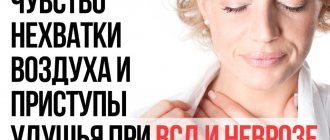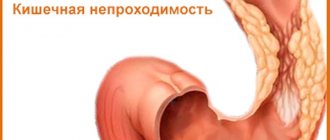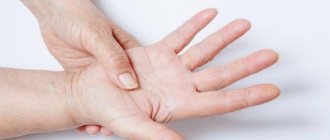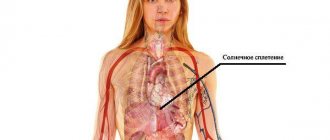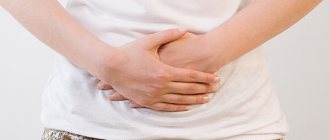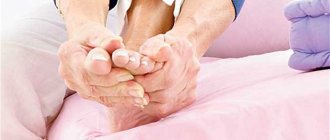Pain in the tailbone does not appear so often; according to statistics, it accounts for less than one percent of all problems with the spine. Sometimes the pain is minor, causing only discomfort, but sometimes the pain disrupts the usual course of life. Often it goes away on its own, but perhaps this is the first sign of a serious illness. If pain occurs in the tailbone when sitting and standing up, treatment in women should be carried out in a timely manner. To do this, you will need to visit a neurologist, therapist or orthopedic traumatologist so that they can help identify the cause of this pain.
Coccyx and pain in it
The tailbone completes the spine. It is a rudiment, joining the sacrum with a semi-movable joint. There are four types of coccygeal configuration, which differ in the angle between the sacrum and the coccyx and direction. It is believed that most cases of pain that occurs without any specific reason are type 4.
The tailbone performs important functions in the body; tendons, ligaments, and muscles are attached to it, which support the internal organs and form the pelvic floor. In a sitting position, the entire weight of a person rests on the tailbone and the bones that form the pelvic bone.
Preventive procedures
With the help of preventive procedures, it is possible to prevent the development of many diseases of the back and genitourinary system, and accordingly reduce the risk of pain in the tailbone in men. Prevention methods include:
- periodic sports;
- avoid lifting heavy weights and excessive physical activity;
- exclude carbonated drinks and foods that cause intestinal gas pollution from the diet;
- perform personal hygiene procedures daily;
- carry out preventive diagnostics every year;
- See a doctor in a timely manner if discomfort or sudden pain in the back occurs;
- take walks in the fresh air every day.
By adhering to these rules, every person will be able to maintain normal health. This requires a minimal amount of effort, which will allow you to avoid long-term treatment of serious pathologies in the future.
Classification of pain in the coccyx area
Pain in the tailbone is divided into two classes:
- Anorectal pain.
- Coccydynia.
The source of anorectal pain is located within the anus or rectum, although it radiates to the tailbone. The source may be an inflammatory process in the surrounding tissues, the consequences of surgery, unstable functioning of the intestines and stomach. Anorectal pain occurs when sitting. It appears more often in older people. They complain of pain in the sacrum and lower back, in the perineum or near the anus.
With coccydynia, severe pain occurs in the tailbone itself. It is more common in women after 40 years of age. The syndrome has certain symptoms:
- The pain is concentrated in the area between the buttocks.
- Touching the tailbone causes a painful sensation.
- When standing on a hard surface for a long time, the pain intensifies. Immediately upon standing up the pain becomes stronger.
- If you bend over while sitting, temporary relief occurs.
- There are problems with defecation.
- A woman feels discomfort during sexual intercourse.
Pain occurs due to neuralgic abnormalities, joint problems, and accumulated salt. A thorough diagnosis is required.
Prevention
Preventive measures are limited to the prevention of underlying diseases that lead to pain in the sacral region. Recommendations:
- do not overcool;
- do not lift heavy objects;
- to refuse from bad habits;
- eat right, consume foods containing calcium;
- avoid prolonged sitting, choose a comfortable chair or armchair;
- to live an active lifestyle.
Preventive measures allow you to avoid not only pain, but also complications in the form of dysfunction of the pelvic organs, disorders of the reproductive system and chronic constipation.
Coccygeal pain rarely occurs due to insufficient or excessive physical activity. More often, the reasons are more serious and require medical attention. If pain persists for 1-2 weeks, a visit to the doctor is mandatory.
Author: Oksana Belokur, doctor, especially for Vertebrolog.pro
Causes of pain in the tailbone
If your tailbone hurts while sitting, there can be many reasons. The following factors may influence his condition:
- bruises from a fall;
- injuries caused to the tailbone while riding a bicycle;
- damage to the coccyx caused by overload.
The impetus for the appearance of pain in the coccyx when sitting or standing up can be degenerative-inflammatory processes and chronic diseases of the sacrum. The reason may be the special structure of the coccyx with an angle of 90° and the apex sharply directed forward.
Pain due to injury
Injuries are the most common cause of tailbone pain. This could be a birth injury, a direct blow to the sacrum, a fall, while sitting, riding a horse or riding a bicycle over rough terrain. A significant period of time may pass between injury and regular pain, so a woman may not associate them.
You may be interested in: Spastic torticollis: methods of combating pathology
During childbirth, the tailbone should move back, expanding the exit, but sometimes this does not happen, the bone becomes hypermobile, and the woman feels pain when standing up and sitting. During pregnancy, pain in the tailbone is physiological in nature and occurs due to increased stress.
Pilonidal disease
Epithelial pilonidal disease, or pilonidal disease, occurs in the hair follicle in the coccyx area. A cyst develops, the growth of bacteria leads to the formation of a fistula, which breaks out. Severe pain and discomfort appears, sometimes fever. The causes of the disease can be hereditary factors, poor hygiene, obesity, and a sedentary lifestyle. Surgery is used to open the fistula and remove the pus.
Tumors in the coccyx area
Tumors (teratomas) in the sacrococcygeal region can be benign or malignant. These may be metastases that spread from malignant tumors of other organs. Surgical treatment is used; in the case of a malignant tumor of a different location, chemotherapy is used.
Idiopathic pain
Unexplained pain is most often a manifestation of coccydynia. The pain appears and disappears. The doctor may prescribe painkillers and preventive physiotherapy.
Haemorrhoids
Hemorrhoids are characterized by itching, bleeding from the anus, accompanied by pain that can radiate to the tailbone area. When sitting, the woman feels discomfort. To identify the cause of the disease and prescribe treatment, you must consult a proctologist. The pain will disappear as soon as the signs of hemorrhoids are eliminated.
Malignant neoplasms
With rectal cancer, the tumor can grow outward, affecting the bladder, uterine wall, sacrum and tailbone. The growth of the tumor affects many nerve endings, causing pain. If severe pain in the tailbone area is accompanied by general weakness, fever, rapid weight loss, and rectal bleeding, you should make an appointment with a doctor to rule out the presence of malignant tumors.
Piriformis syndrome
Pain sometimes occurs in the area of the sciatic nerve. It is associated with piriformis syndrome. It appears when there is a curvature of the spine, due to injury, or after heavy physical activity. The spasmed muscle strongly compresses the nerve, causing inflammation and pain radiating to the tailbone and groin area, to the leg, and the center of the buttock. This diagnosis is made very rarely and is detected after a novocaine blockade.
Endometriosis
Endometriosis is a disease of the female reproductive system. Appears when uterine cells invade other tissues and organs. Appearing in the cervix and ovaries, they continue to bleed and painful sensations appear. When foci of endometriosis form in the area of the rectum, the posterior wall of the uterus, pain appears in the coccyx area. Before menstruation, the pain intensifies, after it it becomes weaker. Pain in the tailbone may also indicate inflammation of the uterine appendages or ectopic pregnancy; consultation with a gynecologist is required.
Spinal diseases
Pain in the coccyx area can occur due to any diseases of the spine: varying degrees of curvature, intervertebral hernia, spondylolisthesis. Since nerve endings are involved in the pathological process, radicular syndrome and painful sensations develop. MRI is used to diagnose the disease. In most cases, it is possible to relieve pain using conservative methods. To maintain health, massage, exercise therapy, and swimming are prescribed.
You may be interested in: Coccyx cyst: causes and removal methods
Diagnostic and treatment methods
If your tailbone hurts when you sit and stand up, you cannot do without a thorough examination. The following diagnostic methods are used:
- palpation of the coccyx;
- radiography, ultrasound of the sacrum and coccyx;
- sigmoidoscopy (examination of the large intestine with an endoscope);
- sphincterometry (determining the tone of the closing muscle of the anus);
- blood and urine tests;
- tests for tumor markers if tumors are suspected;
- tomography.
In the absence of adequate comprehensive treatment, the disease will only get worse. The diseased tailbone is surgically removed unless conservative methods are ineffective. In many cases, the following help cure the disease:
- state of rest;
- pain relief with analgesics, blockades using Novocaine, Lidocaine, Diprospan;
- manual therapy;
- finger massage;
- physiotherapy (UHF, Darsonval, paraffin, mud baths, etc.);
- acupuncture;
- physiotherapy;
- therapy of concomitant diseases.
Treatment of pain in the coccyx
The doctor conducts an examination, palpates the painful area, and prescribes a number of studies: x-rays, ultrasound, MRI, CT. Based on the findings, the cause of pain in the coccyx area is identified. The result of treatment directly depends on eliminating the cause of pain. If inflammation is present, antibiotics are prescribed. Any neoplasm requires surgical intervention; in the case of a malignant tumor, consultation with an oncologist is necessary. If the coccyx is injured, rectal reduction or surgery is performed.
Treatment of coccydynia
If it is determined that the pain is associated directly with the coccyx, a standard course of treatment is applied, including taking medications, physiotherapy, and the use of special devices.
Non-steroidal anti-inflammatory drugs. Prescribed to relieve pain and return the patient to normal life. There are a lot of NSAIDs: Ibuprofen, Diclofenac, Piroxicam. All of them effectively relieve pain, but have one significant contraindication: a negative effect on the gastrointestinal tract. They should not be taken for more than five days and should not exceed the daily dose.
Laxatives. Very often, patients complain that they have problems with stool. Psychological constipation manifests itself due to fear of the discomfort that will appear when straining. Using mild laxatives will help cope with this.
Anesthetic injections. Local anesthetics are injected into the tailbone area when the tablets do not have the desired effect. As a result of the injection, the spasm of the tissues that surround the tailbone is relieved. Sometimes injections help cope with coccydynia.
Special pillows. Since the pain intensifies when sitting, experts recommend purchasing a special seat cushion for pain in the tailbone in the form of a donut or a circle. They are sold in orthopedic salons (pharmacies). This is an excellent remedy to prevent the pain from returning.
Physiotherapy. After you have managed to relieve the inflammation, you can begin physiotherapy. The most commonly used are laser, magnetic treatment, and paraffin applications. For patients with chronic pain in the coccyx area, such procedures are most useful.
Removal of the coccyx. Surgery is resorted to very rarely, if severe pain is not relieved by any medications, the patient’s quality of life deteriorates. The coccycotomy operation is performed in a hospital setting. After surgery, serious rehabilitation is required to avoid infectious complications.
Preventive measures
When a doctor confirms the diagnosis, during and after treatment you must follow simple rules so as not to put stress on your tailbone.
- To prevent constipation, add foods containing fiber to your diet.
- When forced to sit for a long time, be sure to use a special pillow.
- It is recommended to limit the time spent in a sitting position.
Which doctor should I contact?
If your tailbone hurts when you sit and stand up, only a doctor can help you get rid of this ailment. You must first make an appointment with a therapist or directly with a proctologist. Then, most likely, additional consultations will be needed: a neurologist, surgeon, gynecologist, osteopath or psychotherapist. This is often necessary to find out the true nature of the pain.
What to do if your tailbone hurts
It is worth making an appointment with a therapist for an initial consultation. After examination, the doctor can suggest the cause of coccydynia, after which he will refer the patient to more specialized specialists. With such a pathology, consultations with a proctologist, surgeon, neurologist, osteopath, vertebrologist, gynecologist or urologist are often required . A comprehensive diagnosis will help to accurately identify the cause of coccydynia and determine a treatment plan for it.
Most patients are prescribed conservative therapy. Its main focus is the treatment of identified coccyx disease or other concomitant pathology. Inflammatory diseases require antibiotics, tumors require surgery and chemotherapy, dislocations require rectal reduction or surgical intervention. Regardless of the cause, treatment has the following objectives:
- providing the patient with peace;
- pain relief with medications;
- restoration of normal blood circulation through massage and manual therapy;
- undergoing a course of physiotherapy;
- performing physical therapy exercises.
There is no specific treatment for coccydynia during pregnancy . Taking anti-inflammatory and painkillers while pregnant is contraindicated. Women have to cope with pain by placing a soft pillow or an inflatable rubber ring in the shape of a donut (can be purchased at a pharmacy) under the coccygeal region. This is recommended for all patients suffering from coccydynia. This device reduces pressure on the coccygeal region and reduces pain.
How to treat at home
Bed rest is recommended for patients with coccydynia. It must be followed for the first couple of days until the pain subsides. Time spent sitting should be limited. If you have to sit, it is recommended to place special donut-shaped pillows under your coccygeal region. Additionally, it is necessary to prevent constipation. To do this, it is recommended to eat foods with a lot of fiber. To treat coccydynia at home, medications, mainly painkillers, are prescribed.
Drug treatment
For moderate pain, doctors make do with prescribing nonsteroidal anti-inflammatory drugs (NSAIDs). They have an analgesic effect and help reduce inflammation, reduce temperature, and eliminate fever. Indications for the use of NSAIDs are as follows:
- pain of various etiologies, including postoperative, neuralgic, post-traumatic, myalgic;
- fever due to infectious diseases;
- pathologies of the musculoskeletal system, such as osteoarthritis, osteochondrosis, sciatica, rheumatoid arthritis.
NSAIDs can be used both internally and externally, for example, in the form of a gel. These drugs are also most effective when administered rectally. In this case, suppositories are used. Among NSAIDs, the following drugs have good reviews:
- Ibuprofen. The dosage for oral administration is 400 mg up to 3 times a day. Duration of treatment – 5 days. Ibuprofen gel is applied to the inflammation site up to 2-4 times a day for 2 weeks.
- Diclofenac. It is prescribed as intramuscular injections with a dosage of 75 mg 1-2 times a day. The procedure is carried out for 5 days, after which they switch to oral administration. The dosage of tablets is 25-50 mg up to 3 times a day. Diclofenac ointment is applied to the coccygeal area up to 2-4 times a day.
- Ketoprofen. The dose is determined as follows: for tablets - 100 mg 3 times a day, for intramuscular injections - 10 mg (1 ampoule) daily for 1-2 days, for gel - 2 times every day.
- Aspirin. Its dose is 100 mg up to 3 times a day. Take the drug for no longer than 5-7 days.
Article on the topic: Selective serotonin reuptake inhibitors: TOP 10 best and complete list
Of the ointments, Bystrum gel, Finalgon, Capxicam, Nise gel, Ketonal can be used to eliminate painful sensations. To relax spasmodic muscles, drugs from the group of muscle relaxants are used. They are indicated for pain relief and faster recovery. Among the muscle relaxants, the following drugs stand out:
- Mydocalm;
- Tizanidine;
- Baclofen.
If there are problems with bowel movements, the patient needs to take laxatives. They are used only for constipation, since straining causes even more discomfort in the coccygeal region. To eliminate this problem, it is recommended to take mainly herbal laxatives, such as:
- Phytolak;
- Oil seal tincture;
- Ogarkov drops;
- Proctophytol;
- Kafiol.
Blockade
NSAIDs and painkillers are not effective for very severe pain. In this case, the patient is shown a blockade - injection of an anesthetic solution using a syringe into the tissue around the painful area in order to relieve pain and relieve muscle tension. This procedure additionally has anti-inflammatory and antispasmodic effects. The blockade is carried out comprehensively while taking NSAIDs and muscle relaxants. Novocaine is most often used for this procedure, but the following medications can also be used:
- Lidocaine;
- Hydrocortisone;
- Diprospan;
- Kenalog.
Massage
This procedure eliminates muscle tension, improves blood flow at the site of exposure, thereby activating recovery processes. Massage can be done if there is no high temperature, purulent-inflammatory processes in the body and malignant neoplasms. If you get used to it, you can do self-massage, but it is preferable to leave the procedure in the hands of a specialist. The massage technique is as follows:
- The sacral region is warmed up. They rub this area with their fingers, as if they are trying to erase the inscription on the table. The movements are strong, the sacrum may not be spared during the massage.
- Next they switch to point-impact techniques. To do this, they hit different points of the sacral region with their fingers, focusing on the coccygeal region. It is important that the blows do not cause pain.
- Then a fist is placed on the coccygeal area and twisted left and right to create a burning sensation.
- The same is repeated with the fingers of the thumb.
- At the end of the procedure, the sacral area is rubbed. The patient should lie still for another 15 minutes.
Physiotherapy
In modern medicine, physiotherapy methods are widely used to strengthen human health and speed up recovery. Such procedures help to influence a certain area and depth of tissue. The result is that signs of inflammation, pain and swelling are eliminated. Physiotherapy involves influencing the human body with heat, current, cold, magnetic field and ultrasonic waves. For coccydynia, the following procedures are considered useful:
- Ultrasound therapy. It involves the impact on the human body of vibrations of the same name. Ultrasound waves penetrate deeply into body tissues, improving local blood circulation and accelerating healing, for example, of cartilage and nerves. The course of therapy includes 10-12 sessions. They are carried out every day or every other day.
- Darsonvalization. It is an effect on the body of high-frequency current (110 kHz) and voltage up to 25 kV. The course of treatment consists of 20 procedures performed daily or every other day. The current supplied through the electrode improves microcirculation, has a bactericidal effect, and eliminates inflammation.
- Diadynamic therapy. It consists of the influence of electric current on the body with a frequency of 50-100 Hz. To ensure anti-inflammatory and antispasmodic effects, 7-8 sessions of diadynamic therapy are carried out. One procedure lasts from 6-10 to 20 minutes.
- Paraffin therapy. During this procedure, paraffin heated to 52-55 degrees is applied to the skin. It is applied with a special brush, making a layer 1-2 cm thick. An oilcloth is glued on top and a blanket is placed to retain heat. In this state, a person lies for about 30-60 minutes. The course of paraffin therapy is 12-20 sessions. Due to the heat, it improves local blood circulation, relieves muscle spasms, and has an anti-inflammatory effect.
- Phonophoresis. Due to ultrasonic vibrations, medications are introduced into the body. The procedure has an anti-inflammatory effect and stimulates metabolic processes. The average course is 7-12 sessions of phonophoresis.
- UHF. Ultrahigh frequency therapy improves metabolism, blood and lymph circulation. Additionally, the procedure has analgesic and immunostimulating effects. Procedures are done daily or every other day. The essence of UHF is the effect of high-frequency electric current on the body.
Acupuncture
This procedure involves the installation of special needles on certain points of the human body. This helps eliminate pain, strengthen local and general immunity, and normalize the psycho-emotional state. For new-onset coccydynia, a course of 10-12 procedures is recommended. In case of chronic pathology, it is carried out once a quarter.
The acupuncture room is equipped so that the patient feels psychologically comfortable. For this purpose, the procedure can even be accompanied by light music. The entire session goes like this:
- The patient lies down on the couch.
- The specialist disinfects the area where the needles are installed, and then carefully screws them into certain biologically active points of the body.
- After installing 8-10 needles, the patient is left to lie quietly for 20-40 minutes.
- At the end of the session, the needles are removed, although they can come out of the skin on their own.
Surgery
This is a last resort measure of treatment, which is used when conservative therapy is ineffective. Indications for surgery are the following cases:
- Non-union of a fracture of the coccygeal bones;
- unbearable pain that cannot be relieved by medications;
- coccygeal cyst;
- significant deterioration in the patient’s quality of life;
- formation of chronic fistula.
The purpose of surgery is extirpation (removal) of the coccygeal bone. The operation performed is called coccygectomy. This can be done in two ways:
- Retrograde. Involves resection starting from the last coccygeal vertebra to the first. This method is more dangerous and traumatic, as it can lead to damage to the external anal sphincter and the outer lining of the rectum.
- Ategrade. It is carried out in the reverse order - from the first vertebra to the top of the coccygeal region. Complications after surgery include the formation of a hematoma or postoperative seroma, infection of the “coccygeal fossa” that remains after removal of the vertebrae,
Treatment with folk remedies
Most folk recipes for coccydynia are applied externally. Compresses and rubbing help relieve pain. For such procedures, the following means are used:
- Moisten a piece of cotton cloth with valerian tincture. Apply to the sore spot, cover with a piece of polyethylene, secure with a band-aid and wrap with something warm. Leave the compress on all night. Repeat until pain is eliminated.
- Grind enough radishes to squeeze out 300 ml of juice. Add 200 ml of honey and 1 ml of alcohol to it. Stir, then use the mixture to rub the sore spot. Repeat the procedure up to 3 times throughout the day. Between sessions, store on the refrigerator shelf with the lid tightly closed.
- Before going to bed, lubricate the coccygeal area with iodine and wrap it warmly. This procedure is recommended to be carried out no more than 2-3 times a week. The course lasts for 1.5-2 months.
- Dilute 1-2 g of mumiyo with rose oil so that the mixture has the consistency of thick sour cream. Lubricate the sore spot up to 2 times during the day.
- For 500 g of blue clay, take 1 tsp. apple cider vinegar. Mix the components and apply them to the site of inflammation. Put polyethylene on top and then insulate it. Apply the compress every day before bed.
general characteristics
The coccyx is a single bone in the shape of a pyramid, located with the narrow part downwards. There is a movable joint in this place only when it is connected to the sacrum. Therefore, neither osteochondrosis nor articular pathologies occur here. In addition, this part of the spine does not perform any important functions, it only slightly supports the body when sitting. But in the area of the coccyx there are a large number of nerve roots and vessels; muscles and ligaments are attached to it, coming from other parts of the musculoskeletal system and from internal organs.
Therefore, the tailbone can hurt for a variety of reasons. Most men never encounter such a problem. After all, such pain occurs most often after injuries, increased stress, inflammatory diseases of the genitourinary organs, tumors and some other chronic diseases. People with obesity, bad habits, and those involved in active sports are susceptible to it. Therefore, if discomfort still appears in this part of the spine, you should consult a doctor. Without treatment, the pathology will progress and can lead to serious consequences.
Doctors group all pain in this area under the name “coccydynia.” Although they are not always associated specifically with pathologies of the coccyx itself. Sometimes painful sensations radiate from other parts of the spine and can spread to the lower back from the intestines, bladder, or prostate. But most often discomfort is felt in this place due to problems with the rectum. That's why this pain is called anorectal pain.
Men over 40 years of age are most susceptible to such painful sensations. It is at this age that various chronic diseases develop, metabolism slows down, and pathologies of the spine and joints appear. In addition, athletes often experience tailbone pain, especially those who engage in cycling and horse riding, as well as military personnel who drive springless vehicles. Office workers, programmers, and bosses are also susceptible to similar pain due to prolonged sitting on a hard surface.
But such pain occurs much less frequently in men than in women, since their tailbone is less mobile, the muscles and ligaments are stronger. Although pathologies of internal organs can also cause referred coccygeal pain, it is true that they are also more common in women. This problem occurs mainly in obese men, those who eat poorly and have bad habits, who are often hypothermic and lift heavy objects.
When is medical help needed?
Under no circumstances should you endure pain and treat yourself if pain in the tailbone is accompanied by:
- headache;
- increased body temperature;
- painful sensations in other parts of the spine, in the legs.
Also, do not attempt to treat severe, sharp pain in your tailbone caused by an injury on your own; it may be a fracture, which can be treated by a surgeon.
With non-traumatic pain in the tailbone, you can seek help from an orthopedist, osteopath, vertebrologist, or neurologist.
Be sure to watch the following video
How to quickly relieve pain?
You can eliminate pain in the tailbone if you know the reason for its occurrence. But general recommendations can be given as follows:
- If pain occurs after sitting for a long time, you can hang on a bar to release pinched nerve endings.
- After an injury, pain can be eliminated by applying cold to the site of the injury, taking painkillers in tablets, or using external ointments. For several days it is better not to lean on the injured side when sitting, not to make sudden movements and to avoid stress.
- If mild pain occurs, you can use Naproxen or Ibuprofen suppositories.
If the measures taken do not help relieve the pain, then you will need the help of a specialist. You can't hesitate if:
- The temperature has risen.
- Headaches bother me.
- The pain syndrome spreads to other parts and affects the limbs.

